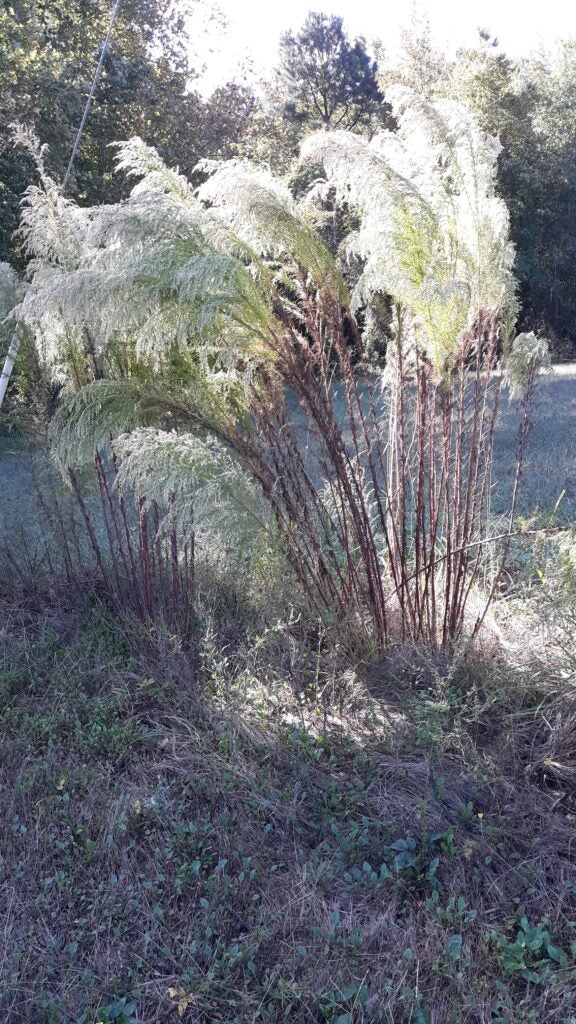Dogfennel should not be confused with edible fennel
Published 10:11 am Wednesday, December 6, 2023

- Fennel weed, known as dogfennel, provides a beautiful look. (Photo by Mary Catherine Foster)
By Mary Catherine Foster
Contributing writer
Growing up in rural Isle of Wight County many decades ago gave me an opportunity to spend countless hours in the great outdoors.
Besides, for a farm child, hanging out close to the house was risky since parents had a ready list of chores to cure any hint of your boredom. Opportunities for entertainment were available in every season. A childhood friend and I could see potential in whatever Mother Nature had to offer even when it was a patch of weeds.
Along with the time for harvesting peanuts, the Dogfennel was reaching its peak in cow pastures, on ditch banks and in any disturbed soil. From September through November, patches of dogfennel can reach heights of 6 feet, with feathery drifts of lacy fern like leaves and large flower heads of small, white pyramid shaped plumes. Swaying gently in the breeze, the flower heads are eye-catching.
For children, these large clumps of stems are almost magical. Break off the stems at ground level, tie the heads together and material for a tepee structure has become a clubhouse. Tomorrow would offer other opportunities to be a part of nature’s playground.
I just knew dogfennel as “fennel weed.” So, how did this common weed become known as dogfennel?
According to Helen Hamilton of the John Clayton Chapter of the Virginia Native Plant Society, dogs seem to enjoy the pungent odor of the crushed leaves, and some people have strewn plants in dog pens and dog houses to control ticks and fleas.
Dogfennel is not to be confused with edible herbal fennel, which is in the carrot family. Dogfennel — eupatorium capillifolium — is in the daisy family. It is not edible and contains an alkaloid called pyrrolizidine that can cause liver damage if ingested in significant quantities.
However, extracted essential oils have shown anti-fungal and insecticide properties. Native Americans used it to repel mosquitoes.
Some folks consider dogfennel to be attractive in containers or as a backdrop in their gardens.
The John Clayton Chapter of the Virginia Native Plant Society named it as the wildflower of the month for September in 2015.
This plant is very aggressive, spreading by seeds distributed by the wind and sprouts from root stocks. It tolerates several types of growing conditions and can quickly crowd out other plants. It is generally not eaten by animals, but does offer some value to wildlife by attracting bees and wasps. Frankly, I chose to leave Dogfennel by the roadside and enjoy its feathery appearance from a distance.
Virginia Cooperative Extension programs and employment are open to all, regardless of age, color, disability, gender, gender identity, gender expression, national origin, political affiliation, race, religion, sexual orientation, genetic information, veteran status, or any other basis protected by law. An equal opportunity/affirmative action employer. Issued in furtherance of Cooperative Extension work, Virginia Polytechnic Institute and State University, Virginia State University, and the U.S. Department of Agriculture cooperating. Edwin J. Jones, Director, Virginia Cooperative Extension, Virginia Tech, Blacksburg; M. Ray McKinnie, Administrator, 1890 Extension Program, Virginia State University, Petersburg.





